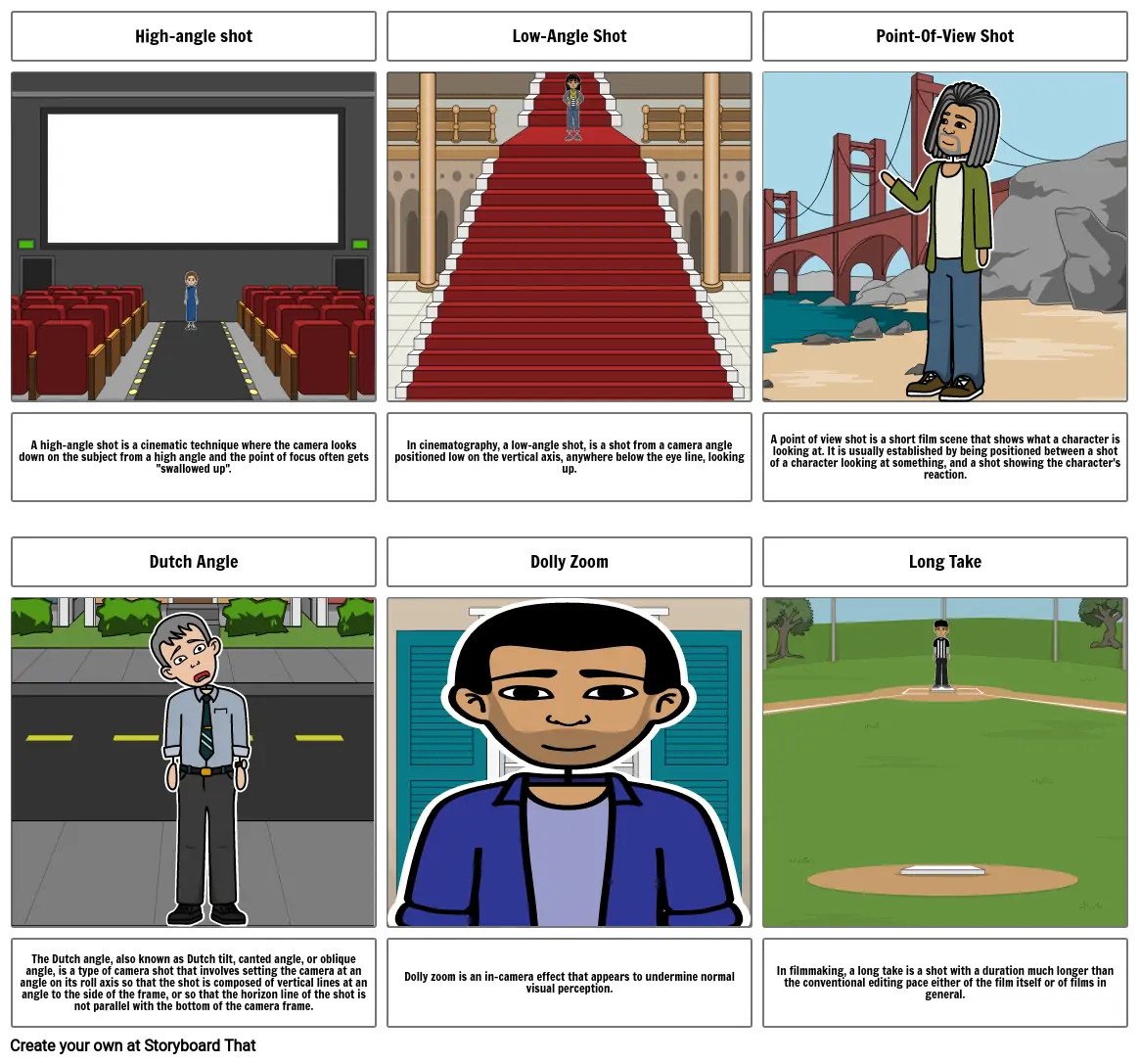Part 2

Siužetinės Linijos Tekstas
- High-angle shot
- Low-Angle Shot
- Point-Of-View Shot
- A high-angle shot is a cinematic technique where the camera looks down on the subject from a high angle and the point of focus often gets "swallowed up".
- Dutch Angle
- In cinematography, a low-angle shot, is a shot from a camera angle positioned low on the vertical axis, anywhere below the eye line, looking up.
- Dolly Zoom
- A point of view shot is a short film scene that shows what a character is looking at. It is usually established by being positioned between a shot of a character looking at something, and a shot showing the character's reaction.
- Long Take
- The Dutch angle, also known as Dutch tilt, canted angle, or oblique angle, is a type of camera shot that involves setting the camera at an angle on its roll axis so that the shot is composed of vertical lines at an angle to the side of the frame, or so that the horizon line of the shot is not parallel with the bottom of the camera frame.
- Dolly zoom is an in-camera effect that appears to undermine normal visual perception.
- In filmmaking, a long take is a shot with a duration much longer than the conventional editing pace either of the film itself or of films in general.
Sukurta daugiau nei 30 milijonų siužetinių lentelių
Nereikia Atsisiuntimų, Nereikia Kredito Kortelės ir Nereikia Prisijungti!
